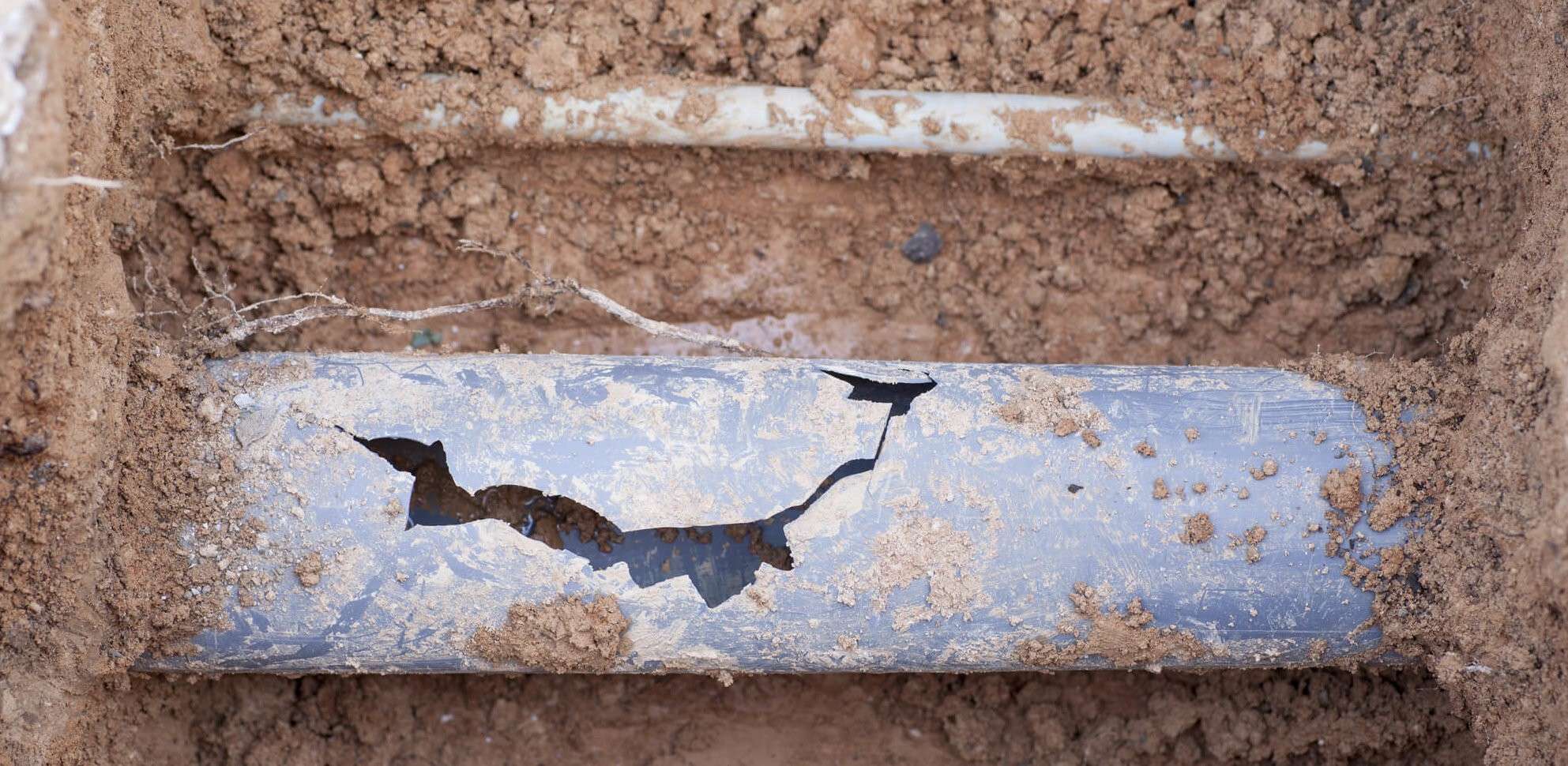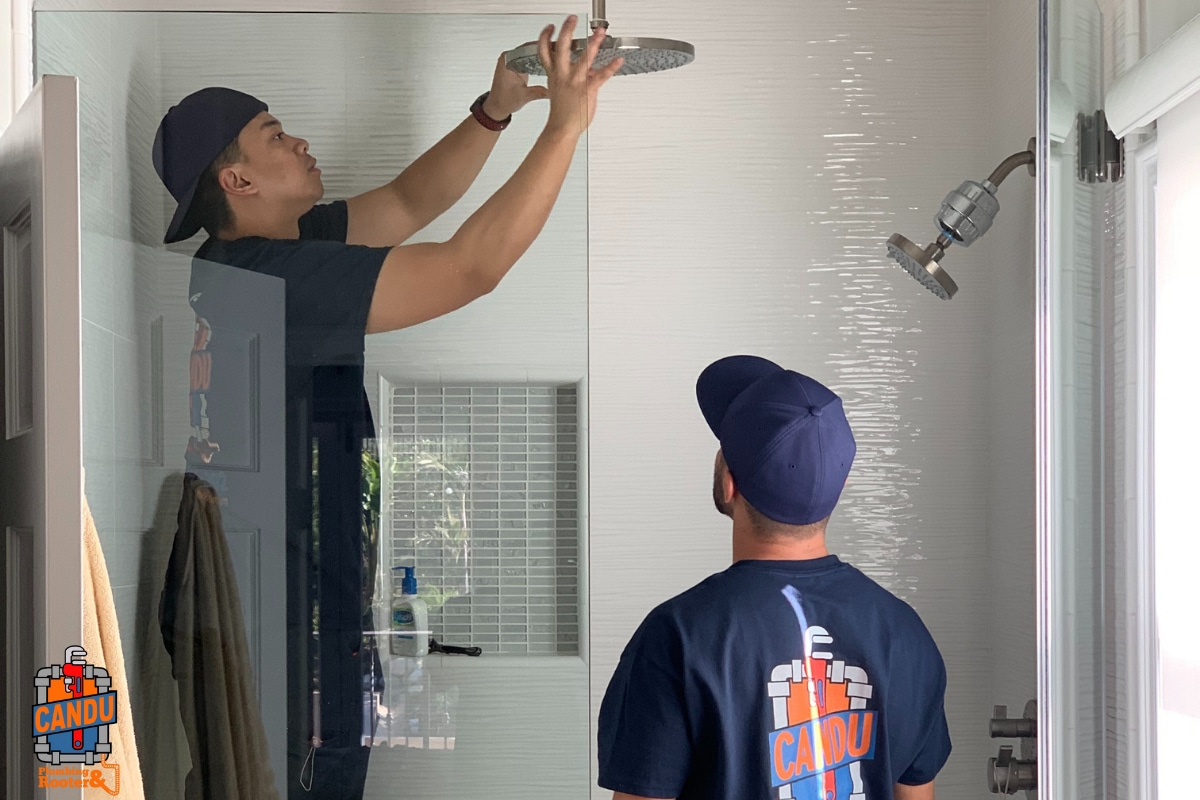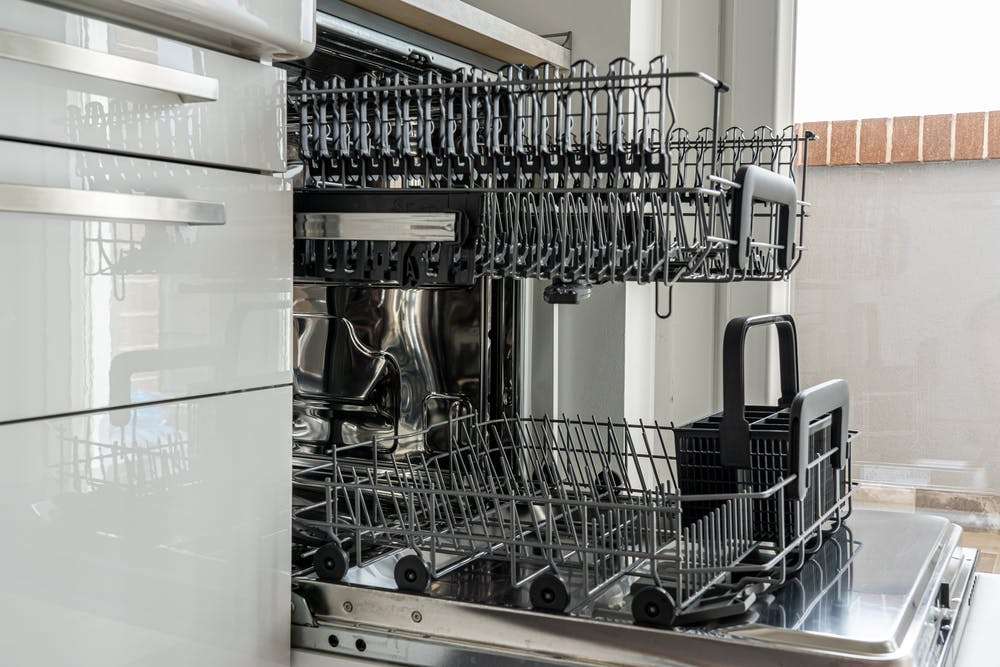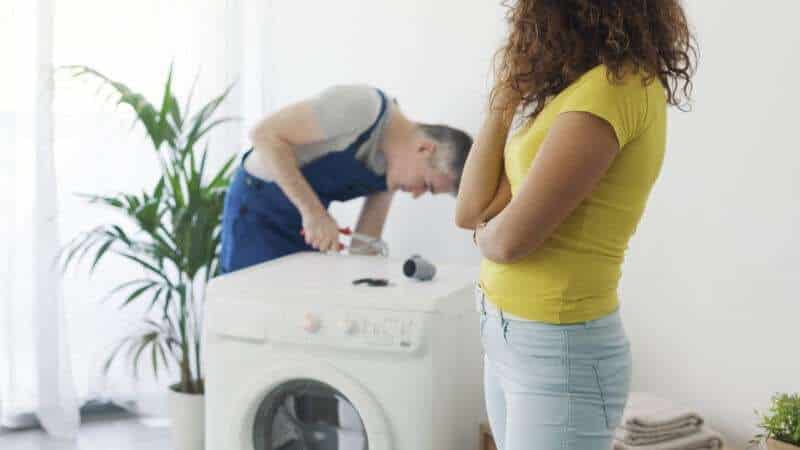Broken Sewer Line? How Do You Know?
Most homeowners take an “out of sight, out of mind” approach when dealing with a plumbing issue.
That’s because the cost of a major repair can dip into your savings.
The problem is that a hidden leak can also run up your water bill significantly. Some issues can lead to potential health issues that could rack up healthcare charges quickly.
That’s why it is always a good idea to find and repair any leaks with your plumbing system as soon as possible.
One of the worst contributors to the “out of sight, out of mind” philosophy is the sewer line. It is located underground, often coming into your home under or through the foundation. If something clogs or breaks, you can end up with a costly repair and dirty water all over your floors.
Symptoms of a Broken Sewer Line to Recognize
When a broken sewer line occurs, you’ll notice one or more of the following symptoms starting to develop around your property. Each problem should be thoroughly investigated before writing it off as a chance issue.
1. You can detect an odor of sewer gas.
Although it might be easy to dismiss an unusual odor coming from a drain, it shouldn’t be a smell you can detect in each room.
This sign is the clearest indicator that you have a cracked or broken sewer drain. These odors should never come into your home when the plumbing system operates as it should.
The symptoms could indicate other problems instead of a broken sewer line. It’s often a good idea to have a thorough inspection completed to determine if this problem exists and the extent of the potential damage.
2. The drains have become a lot slower.
Drains can get slower for lots of reasons. There could be a blockage point in the trap of your toilet or sink.
The symptom of a broken sewer line is that every plumbing fixture will drain slower than average. This problem often happens when the ground settles around the installation, tree roots infiltrate the line, or obstruction occurs from incompatible flushing materials.
3. More backups and clogging occur.
An isolated clog doesn’t mean that your entire sewer line needs to get fixed. When you have multiple problems that cause water or sewage to spill on the floor, you could be dealing with this problem.
If you’ve tried to unclog the drains and the problem persists, it’s time to contact a professional plumber for a complete inspection. You’ll receive a report that includes what the next steps should be to correct your problem.
4. There’s a beautiful area on your lawn.
Lush spots in a yard with greener hues or more vibrancy can be evidence of a collapsed or cracked sewer line. Waste contains nutrients that plants need as fertilizer, encouraging more life and color where they seep into the ground.
Toxins can build up in the soil if the waste leak isn’t corrected in short order. If the soil is disturbed, those concerns could adversely impact someone’s health.
5. The ground around your home is soggier than expected.
Although greening frequently happens in a lawn experiencing a sewer leak, it isn’t always that way. What you might see is a wet area that smells foul when it’s disturbed. This issue can become severe enough that a sinkhole forms around the property, making the yard unusable until a repair occurs.
The good news is that a sinkhole in the affected area makes it easier to locate the primary problem. As for the bad news, those swampy conditions can attract rodents and insects that can spread the sewer toxins back inside your home.
6. More rodents and insects are camping on your property.
Insects love stagnant water. It serves as their breeding grounds, especially when you’re in the warmest days of summer.
Rodents often make their homes in a sewer pipe, finding a small crack to serve as a door. They’ll eventually wriggle through the area to enter the house.
Exposure to these pests can result in health issues. That’s why it helps to hire a local pest control agency for a couple of months after a professional plumber corrects this situation.
7. Mold and mildew development are significantly higher.
Wet spots inside your home can develop because of a broken water pipe or sewer line. If these areas are left uncorrected, mold and mildew can rapidly multiply.
Black mold development is sometimes considered hazardous in homes. It can cause breathing difficulties, allergic reactions, and other health issues.
Some wet areas can catch fungi spores to encourage growth inside the home. These elements can damage the foundation, exterior, and interior with remarkable speed.
If you see any unusual mold or mildew growth, it should be inspected immediately.
8. You can see wall cracks or broken slabs on your property.
The ground naturally settles after a house gets built. These shifting elements can cause walls, doorways, and windowsills to crack when enough movement occurs.
If your home develops new cracks in unexpected ways, it could be due to a broken sewer line. A leak won’t improve as time passes since more water will keep washing away the surrounding soil.
Once the repair is complete, you might need a foundation specialist to come by for a professional inspection to see what repairs might be necessary.
I’ve Got a Broken Sewer Pipe: Now What?
If you have experienced any of the issues listed in this post, it is time to contact a trusted plumbing services provider.
Although an occasional clog happens to everyone, you shouldn’t be experiencing an issue that impacts every drain simultaneously.
Inspecting your sewer line can determine the break’s location, if a repair is possible, or if the entire line requires replacement.
Our team delivers fast and professional results for all your plumbing needs. If you’ve encountered a problem with your toilet, sink, shower, or more, one call can solve all your potential issues. Contact us today to get onto our schedule so that we can help you out!
Most homeowners take an “out of sight, out of mind” approach when dealing with a plumbing issue.
That’s because the cost of a major repair can dip into your savings.
The problem is that a hidden leak can also run up your water bill significantly. Some issues can lead to potential health issues that could rack up healthcare charges quickly.
That’s why it is always a good idea to find and repair any leaks with your plumbing system as soon as possible.
One of the worst contributors to the “out of sight, out of mind” philosophy is the sewer line. It is located underground, often coming into your home under or through the foundation. If something clogs or breaks, you can end up with a costly repair and dirty water all over your floors.
Symptoms of a Broken Sewer Line to Recognize
When a broken sewer line occurs, you’ll notice one or more of the following symptoms starting to develop around your property. Each problem should be thoroughly investigated before writing it off as a chance issue.
1. You can detect an odor of sewer gas.
Although it might be easy to dismiss an unusual odor coming from a drain, it shouldn’t be a smell you can detect in each room.
This sign is the clearest indicator that you have a cracked or broken sewer drain. These odors should never come into your home when the plumbing system operates as it should.
The symptoms could indicate other problems instead of a broken sewer line. It’s often a good idea to have a thorough inspection completed to determine if this problem exists and the extent of the potential damage.
2. The drains have become a lot slower.
Drains can get slower for lots of reasons. There could be a blockage point in the trap of your toilet or sink.
The symptom of a broken sewer line is that every plumbing fixture will drain slower than average. This problem often happens when the ground settles around the installation, tree roots infiltrate the line, or obstruction occurs from incompatible flushing materials.
3. More backups and clogging occur.
An isolated clog doesn’t mean that your entire sewer line needs to get fixed. When you have multiple problems that cause water or sewage to spill on the floor, you could be dealing with this problem.
If you’ve tried to unclog the drains and the problem persists, it’s time to contact a professional plumber for a complete inspection. You’ll receive a report that includes what the next steps should be to correct your problem.
4. There’s a beautiful area on your lawn.
Lush spots in a yard with greener hues or more vibrancy can be evidence of a collapsed or cracked sewer line. Waste contains nutrients that plants need as fertilizer, encouraging more life and color where they seep into the ground.
Toxins can build up in the soil if the waste leak isn’t corrected in short order. If the soil is disturbed, those concerns could adversely impact someone’s health.
5. The ground around your home is soggier than expected.
Although greening frequently happens in a lawn experiencing a sewer leak, it isn’t always that way. What you might see is a wet area that smells foul when it’s disturbed. This issue can become severe enough that a sinkhole forms around the property, making the yard unusable until a repair occurs.
The good news is that a sinkhole in the affected area makes it easier to locate the primary problem. As for the bad news, those swampy conditions can attract rodents and insects that can spread the sewer toxins back inside your home.
6. More rodents and insects are camping on your property.
Insects love stagnant water. It serves as their breeding grounds, especially when you’re in the warmest days of summer.
Rodents often make their homes in a sewer pipe, finding a small crack to serve as a door. They’ll eventually wriggle through the area to enter the house.
Exposure to these pests can result in health issues. That’s why it helps to hire a local pest control agency for a couple of months after a professional plumber corrects this situation.
7. Mold and mildew development are significantly higher.
Wet spots inside your home can develop because of a broken water pipe or sewer line. If these areas are left uncorrected, mold and mildew can rapidly multiply.
Black mold development is sometimes considered hazardous in homes. It can cause breathing difficulties, allergic reactions, and other health issues.
Some wet areas can catch fungi spores to encourage growth inside the home. These elements can damage the foundation, exterior, and interior with remarkable speed.
If you see any unusual mold or mildew growth, it should be inspected immediately.
8. You can see wall cracks or broken slabs on your property.
The ground naturally settles after a house gets built. These shifting elements can cause walls, doorways, and windowsills to crack when enough movement occurs.
If your home develops new cracks in unexpected ways, it could be due to a broken sewer line. A leak won’t improve as time passes since more water will keep washing away the surrounding soil.
Once the repair is complete, you might need a foundation specialist to come by for a professional inspection to see what repairs might be necessary.
I’ve Got a Broken Sewer Pipe: Now What?
If you have experienced any of the issues listed in this post, it is time to contact a trusted plumbing services provider.
Although an occasional clog happens to everyone, you shouldn’t be experiencing an issue that impacts every drain simultaneously.
Inspecting your sewer line can determine the break’s location, if a repair is possible, or if the entire line requires replacement.
Our team delivers fast and professional results for all your plumbing needs. If you’ve encountered a problem with your toilet, sink, shower, or more, one call can solve all your potential issues. Contact us today to get onto our schedule so that we can help you out!





